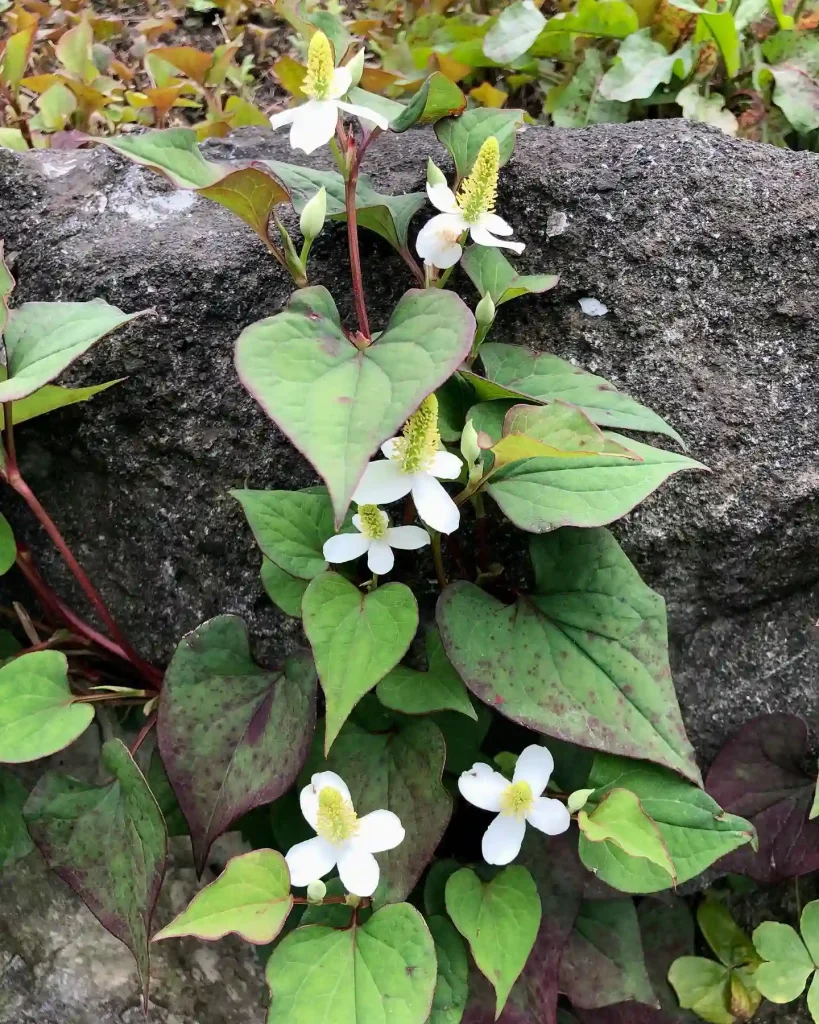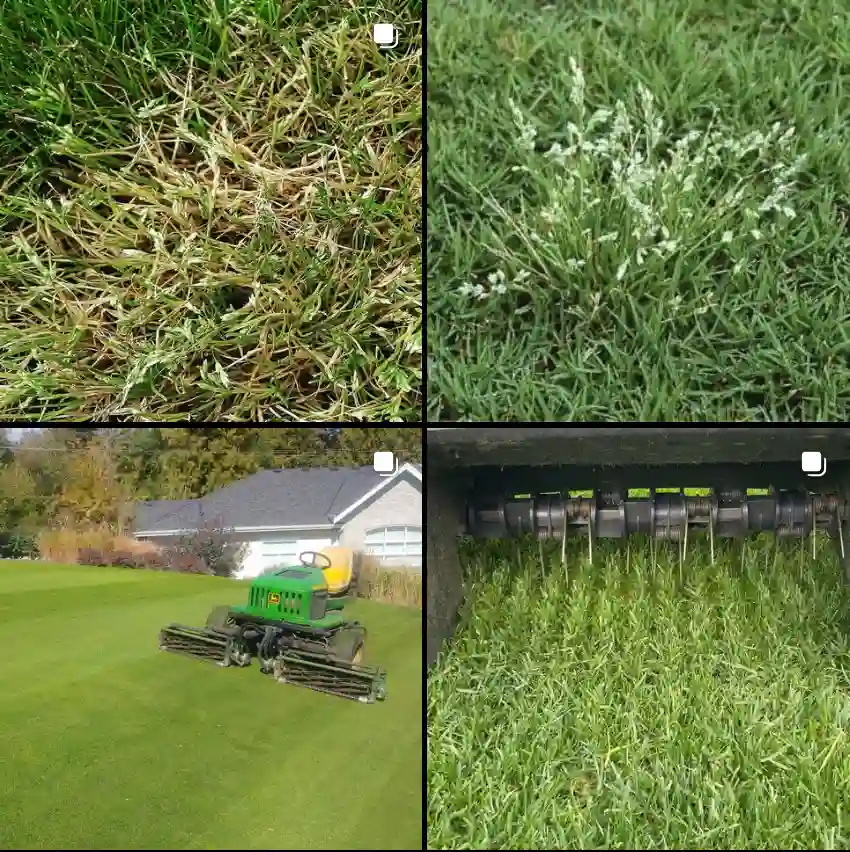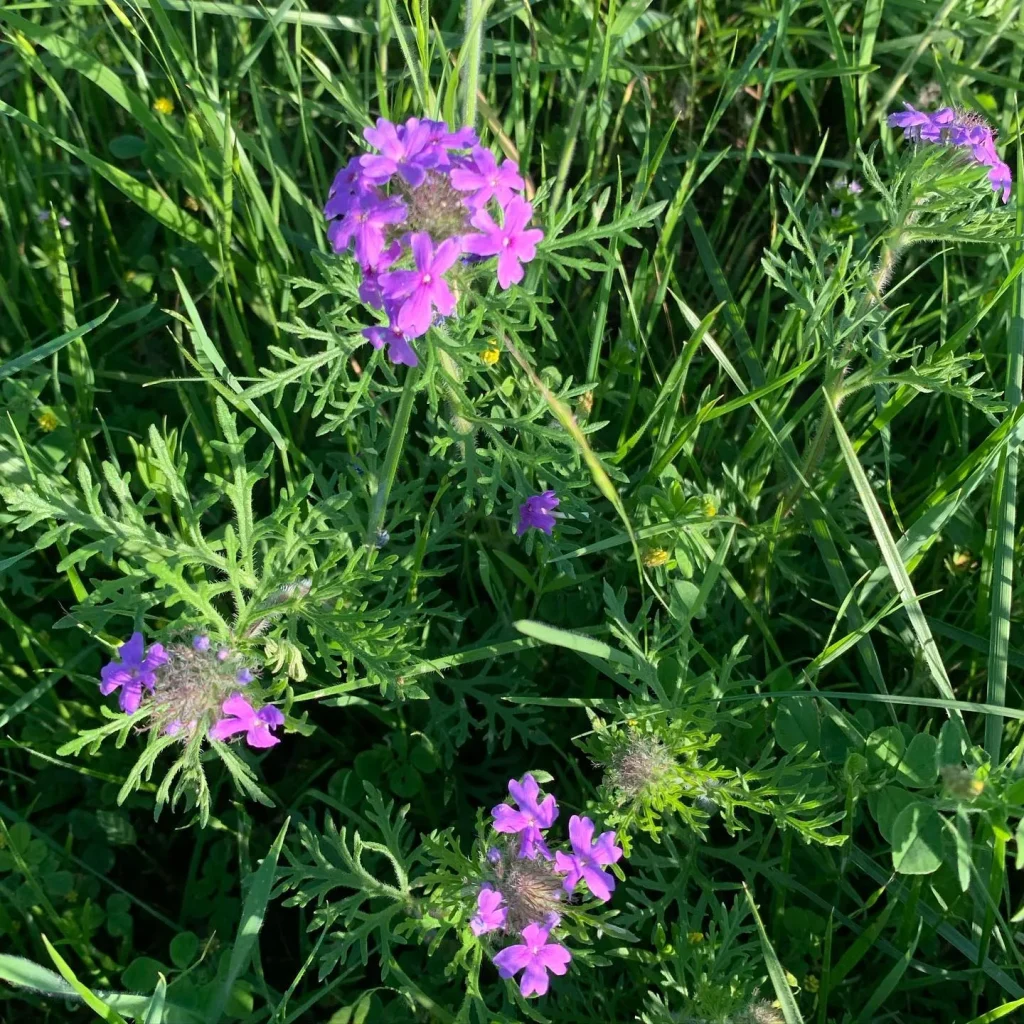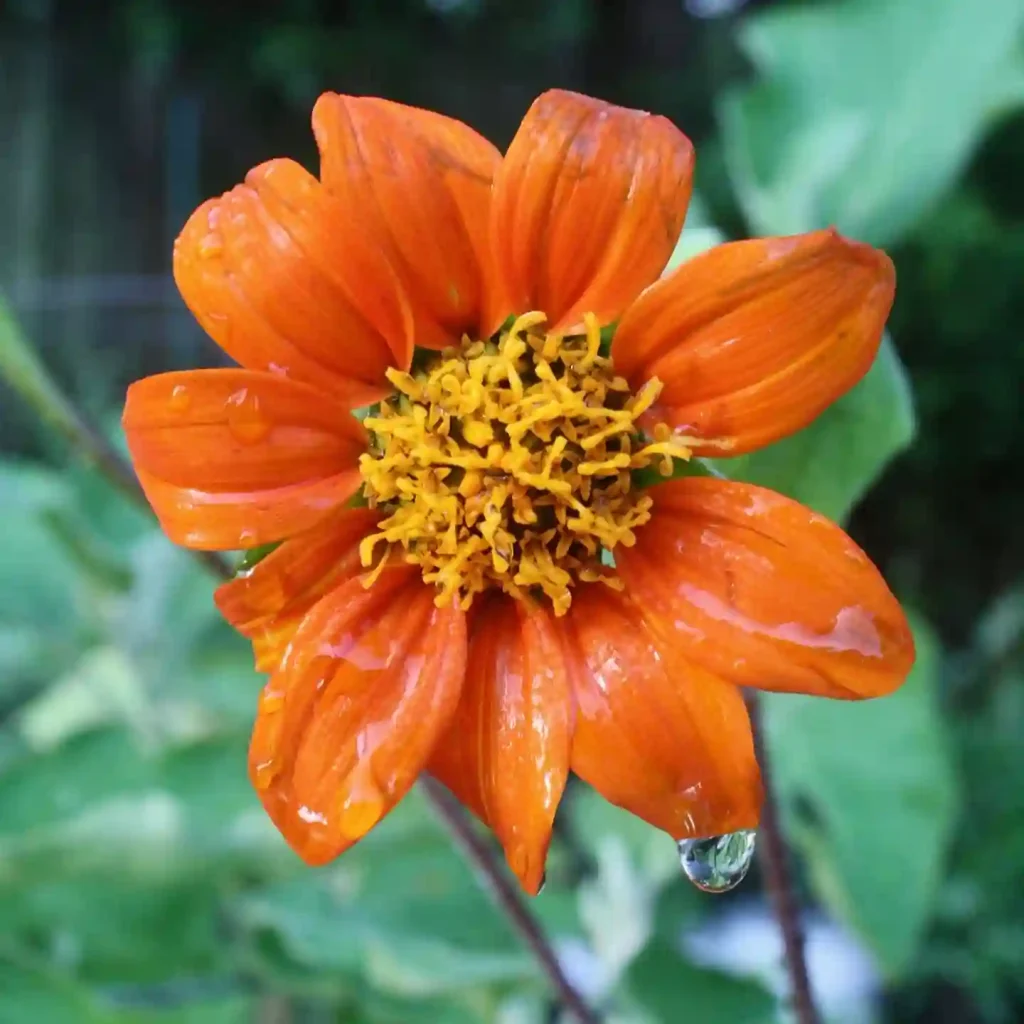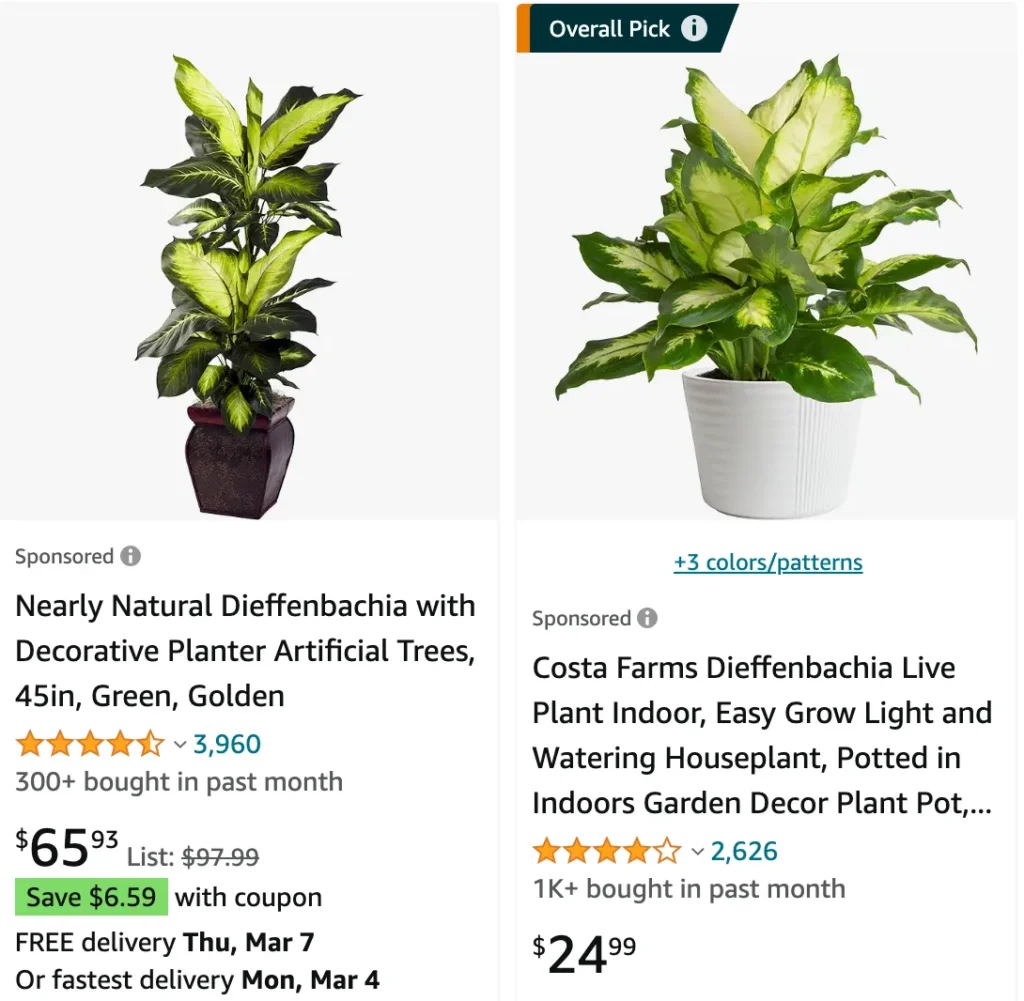
Dieffenbachia Seguine vs Amoena
I’ve found Dieffenbachia Seguine to be a bit more resilient and forgiving with light conditions compared to the Amoena, which can be a bit fussy and requires more consistent care to thrive.
How to care for Dieffenbachia seguine?
Here’s a guide on how to care for your Dieffenbachia Seguine, a beautiful tropical plant known for its variegated leaves:
Light:
- Bright, indirect sunlight is ideal. This allows the plant to maintain its beautiful variegation and promotes healthy growth. Avoid strong direct sunlight, which can scorch the leaves.
- Lower light conditions can be tolerated, but the variegation may become less pronounced and the growth might be slower.
Watering:
- Water moderately, allowing the top inch of soil to dry out slightly between waterings. Overwatering is a major threat to Dieffenbachia Seguine. Here’s a simple way to check moisture: Stick your finger into the top inch of soil. If it feels dry to the touch, it’s time to water.
- Water thoroughly until water runs out the drainage holes. Discard any drainage water to prevent the plant from sitting in waterlogged soil.
Soil and Drainage:
- Well-draining, aerated soil is essential. A good quality potting mix formulated for aroids or indoor plants works well. You can also create your own mix using:
- Potting soil
- Perlite or orchid bark (for extra drainage and aeration)
- Ensure your pot has drainage holes to prevent waterlogging.
Humidity:
- Moderate humidity is beneficial. While it can tolerate average household humidity levels, dry air can cause brown, crispy leaf edges. You can increase humidity by:
- Misting the plant occasionally with lukewarm water (avoiding the center of new growth)
- Using a pebble tray filled with water (place the pot on top of the pebbles, sitting above the water level)
- Grouping your Dieffenbachia Seguine with other humidity-loving plants
- Using a humidifier
Fertilizing:
- Fertilize sparingly during the growing season (spring and summer) only. Apply a balanced liquid fertilizer diluted to half strength once a month or use a slow-release fertilizer formulated for houseplants according to package instructions.
- Avoid overfertilizing, as it can damage the roots.
Temperature:
- Warm temperatures between 60-80 degrees Fahrenheit (15-27 degrees Celsius) are ideal. Protect your Dieffenbachia Seguine from cold drafts and sudden temperature fluctuations.
Additional Tips:
- Wipe the leaves occasionally with a damp cloth to remove dust and improve light absorption. Avoid harsh chemicals or cleaning products.
- Dieffenbachia Seguine is a moderately fast-growing plant. Be patient and avoid overwatering in anticipation of faster growth.
- Dieffenbachia Seguine is toxic to humans and pets if ingested. Keep out of reach of children and pets.
How to propagate Dieffenbachia seguine?
Dieffenbachia Seguine, with its beautiful variegated leaves, can be propagated quite easily through stem cuttings! Here’s a guide on how to do it using two methods: water propagation and soil propagation.
Things you’ll need:
- Sharp knife or pruning shears (sterilized)
- Potting mix suitable for aroids or well-draining indoor plant mix
- Pot with drainage holes (size appropriate for the cutting)
- Transparent container (jar or glass) for water propagation (optional)
- Fungicide (optional)
Propagation by Stem Cuttings:
Water Propagation:
- Choose a healthy stem: Select a mature stem with at least 2-3 nodes (leaf bumps). Ideally, the cutting should be 4-6 inches long.
- Make a clean cut: Using your sterilized pruners or knife, make a clean cut just below a node. You can also cut above a node if the stem has several leaves.
- Remove lower leaves: Remove the lower leaves on the stem, exposing at least 1-2 nodes. This area will be submerged in water to grow roots.
- Apply fungicide (optional): You can dip the cut end of the stem in a fungicide solution to help prevent rot.
- Place the cutting in water: Fill your transparent container with clean, lukewarm water. Submerge the bare nodes of the stem in the water, ensuring the leaves don’t touch the water.
- Place in bright indirect light: Find a warm location with bright indirect sunlight for your container. Avoid direct sunlight.
- Change the water regularly: Refresh the water every 3-4 days to prevent bacteria growth.
- Wait for root development: Be patient! Root development can take several weeks. You’ll see white roots growing from the nodes.
- Planting in soil: Once the roots reach about 1-2 inches long, you can transplant the cutting into a pot with well-draining soil.
Soil Propagation:
- Follow steps 1-4 from the water propagation method above.
- Prepare your pot: Fill your pot with a well-draining potting mix suitable for aroids. Moisten the soil lightly.
- Planting the cutting: Make a hole in the soil deep enough to accommodate the bare stem with nodes. Plant the cutting, ensuring the nodes are buried in the soil.
- Water thoroughly: Water the soil well to settle it around the cutting.
- Maintain moisture: Keep the soil consistently moist but not soggy. Water when the top inch of soil feels dry to the touch.
- Place in bright indirect light: Similar to water propagation, keep the pot in a warm location with bright indirect sunlight.
- New growth: In a few weeks, you should see new growth emerge from the top of the cutting.
Additional Tips:
- You can propagate Dieffenbachia Seguine throughout the year, but spring and summer are generally considered the best times.
- When planting the cutting in soil, you can create a mini greenhouse effect by covering the pot loosely with a clear plastic bag to maintain humidity. Just ensure air circulation by creating small holes in the bag and remove it completely once new growth appears.
- Be patient! Propagation takes time, so don’t expect instant results.
Is Dieffenbachia seguine poisonous?
Yes, Dieffenbachia Seguine, also known as Dumbcane, is poisonous. All parts of the plant, including the leaves, stems, and roots, contain calcium oxalate crystals and proteolytic enzymes.
If ingested, these toxins can cause irritation and swelling of the mouth, throat, and tongue. In severe cases, it can even lead to temporary paralysis of the mouth, tongue, and vocal cords.
Here’s a summary of the risks:
- Symptoms: Ingestion can cause irritation, swelling, pain, and burning in the mouth, throat, and tongue. Difficulty swallowing and temporary paralysis may occur in severe cases.
- Toxic to: Humans and pets (cats, dogs)
Prevention:
- Keep Dieffenbachia Seguine out of reach of children and pets.
- Consider placing the plant in a hanging basket or on a high shelf to deter access.
- Teach children not to put plant parts in their mouths.
- Wear gloves when handling or pruning the plant to avoid skin irritation.
If ingestion is suspected:
- Seek medical attention immediately or contact the Poison Control Center.
- Do not induce vomiting unless instructed by a medical professional.
Here are some resources for Poison Control Centers around the world:
- USA: 1-800-222-1222 (https://www.aapcc.org/)
- UK: 111 (https://digital.nhs.uk/services/nhs-111-online)
- Australia: 13 11 26 (https://www.health.gov.au/contacts/poisons-information-centre)
Remember: It’s always best to err on the side of caution. If you’re unsure about the toxicity of a plant, keep it out of reach of children and pets.
If i die, water my plants!
